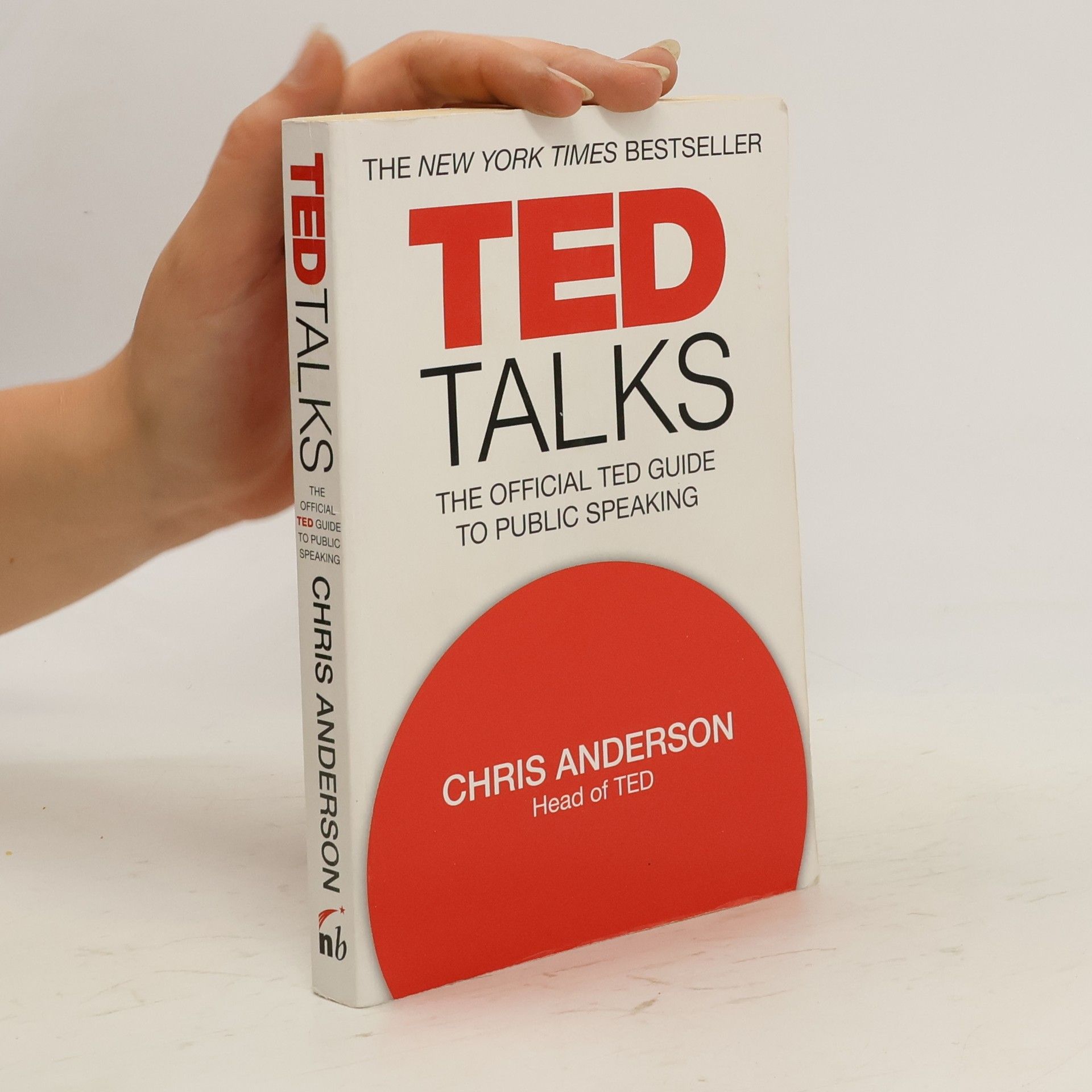TED TALKS THE OFFICIAL TED GUIDE TO PUBL
- 288 páginas
- 11 horas de lectura
For anyone who has ever been inspired by a TED talk, this is an insider s guide to creating talks that are unforgettable."
Chris Anderson, como editor en jefe de Wired, es un observador agudo de la transformación global, centrándose en el poder, el talento y los ejemplos morales que dan forma a nuestro mundo. Su trabajo profundiza en el panorama cambiante de la cultura y la tecnología, ofreciendo análisis perspicaces que animan a los lectores a contemplar el futuro. La perspectiva única de Anderson proporciona un contexto esencial para comprender las tendencias contemporáneas y su impacto potencial.







For anyone who has ever been inspired by a TED talk, this is an insider s guide to creating talks that are unforgettable."
A young readers edition of the New York Times best-selling TED TALKS , chock- full of tips and techniques to help young people become confident, capable speakers.
Christopher Anderson (*1970, Kelowna, Canada), a member of Magnum Photos, is one of the most influential contemporary photographers. He first gained recognition in 1999 when he boarded a small boat with 44 Haitian immigrants trying to sail to America. The boat sank in the Caribbean. For his images, he received the Robert Capa Gold Medal. Since then, Anderson’s work has defied categorization as he slips between the worlds of documentary, art, commercial and fashion photography. He was New York Magazine’s first ever “Photographer in Residence” and won the World Press Photo contest in 2007 and 2008. The images in Bleu Blanc Rouge , taken in the United States, France, Italy, Spain, and Germany, include portraits, candid moments, and still lifes. Recurring visual elements as the color red, forms and patterns, or a certain light tie the images together to a playful and poetic series. Presented in a magazine-like style, the particular intimacy of Anderson’s images enchants the viewer in an instant. Exhibition: 3.11.–8.12.2018, Ravestijn Gallery, Amsterdam
What happens when advances in technology allow many things to be produced for more or less nothing? And what happens when those things are then made available to the consumer for free? Chris Anderson considers a brave new world where the old economic certainties are being undermined by a growing flood of free goods.
In the New York Times-bestselling Ted Talks Chris Anderson, head of TED, reveals the inside secrets of how to give a first-class presentation. Where books like Talk Like TED and TED Talks Storytelling whetted the appetite, here is the official TED guide to public speaking from the man who put TED talks on the world's stage. 'Nobody in the world better understands the art and science of public speaking than Chris Anderson. He is absolutely the best person to have written this book' Elizabeth Gilbert. Anderson shares his five key techniques to presentation success: Connection, Narration, Explanation, Persuasion and Revelation (plus the three to avoid). He also answers the most frequently asked questions about giving a talk, from 'What should I wear?' to 'How do I handle my nerves?'. Ted Talks is also full of presentation tips from such TED notable speakers as Sir Ken Robinson, Bill Gates, Mary Roach, Amy Cuddy, Elizabeth Gilbert, Dan Gilbert, Amanda Palmer, Matt Ridley and many more. This is a lively, fun read with great practical application from the man who knows what goes into a truly memorable speech. InTed Talks Anderson pulls back the TED curtain for anyone who wants to learn how to prepare an exceptional presentation.
Just as Google, Facebook and others have created highly successful companies in the virtual world, so these new inventors and manufacturers are assuming positions of ever greater importance in the real world.
The future of a radical price
Reveals how to run an online business profitably in spite of the Internet's inherently free culture, disseminating the principles of a ''priceless economy'' in six categories that pertain to advertising, labor exchange, and advanced-version fees.
"What happens when there is almost unlimited choice? When everything becomes available to everyone? And when the combined value of the millions of items that only sell in small quantities equals or even exceeds the value of a handful of best-sellers? In this ground-breaking book, Chris Anderson shows that the future of business does not lie in hits - the high-volume end of a traditional demand curve - but in what used to be regarded as misses - the endlessly long tail of that same curve. As our world is transformed by the Internet and the near infinite choice it offers consumers, so traditional business models are being overturned and new truths revealed about what consumers want and how they want to get it. Chris Anderson first explored the Long Tail in an article in "Wired" magazine that has become one of the most influential business essays of our time. Now, in this eagerly anticipated book, he takes a closer look at the new economics of the Internet age, showing where business is going and exploring the huge opportunities that exist: for new producers, new e-tailers, and new tastemakers. He demonstrates how long tail economics apply to industries ranging from the toy business to advertising to kitchen appliances. He sets down the rules for operating in a long tail economy. And he provides a glimpse of a future that's already here." - publishers description.
Moneyball meets Freakonomics in this myth-busting guide to understanding—and winning—the most popular sport on the planet. Innovation is coming to soccer, and at the center of it all are the numbers—a way of thinking about the game that ignores the obvious in favor of how things actually are. In The Numbers Game, Chris Anderson, a former professional goalkeeper turned soccer statistics guru, teams up with behavioral analyst David Sally to uncover the numbers that really matter when it comes to predicting a winner. Investigating basic but profound questions—How valuable are corners? Which goal matters most? Is possession really nine-tenths of the law? How should a player’s value be judged?—they deliver an incisive, revolutionary new way of watching and understanding soccer.
Why does stopping a goal beat scoring one? Why do the best defenders rarely touch the ball? Why is ditching your worst player smarter than buying a superstar? In this myth-busting book, Chris Anderson and David Sally show that the normal football terms - goals, possession, points, transfer fees - can actually hinder how we understand the game. Instead, by diving deep into the data, they uncover hidden truths about what is really happening on the pitch. Wonderfully readable and counter-intuitive, The Numbers Game will win you plenty of pub arguments. After reading it you will never think about football in the same way again. 'Rush to read this book immediately. The game [you] love will take on new depth, colour and subtlety.' Ed Smith, The Times 'Pundits, armchair fans and professionals will find that several of their long-cherished truisms are not true at all.' Guardian 'Challenges everything we know about football.' 'Sportshour', BBC World Service 'A highly original contribution to our understanding of what we are seeing at a match . . . unbeatable.' Independent on Sunday